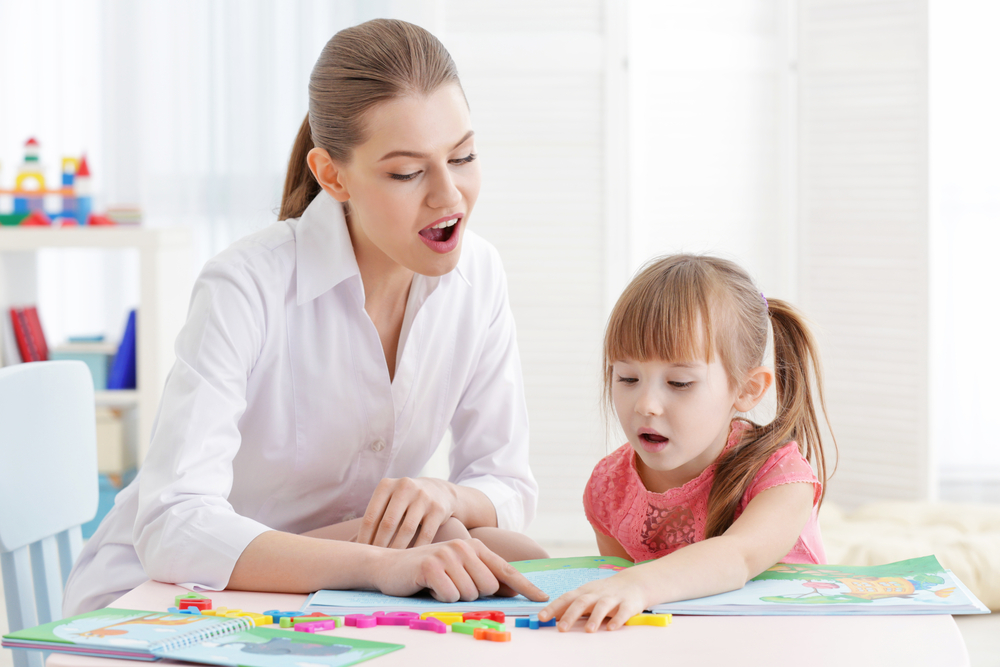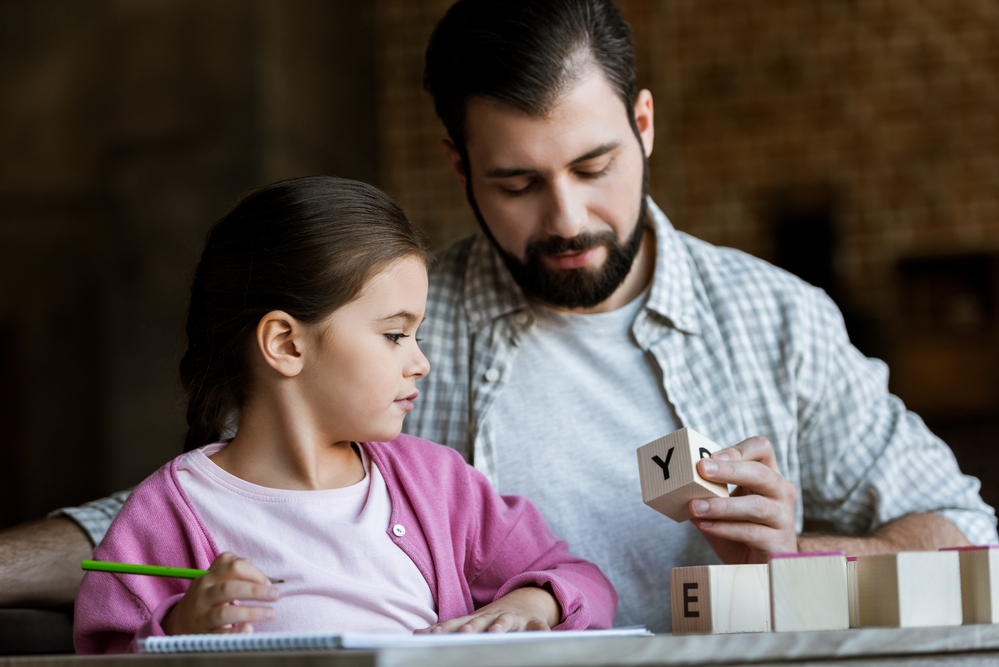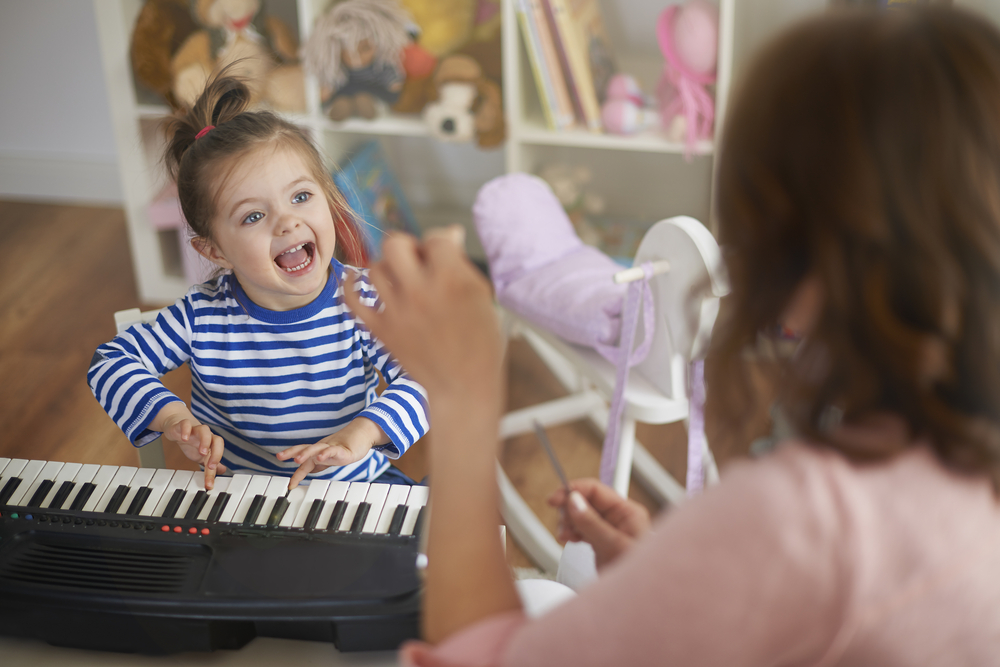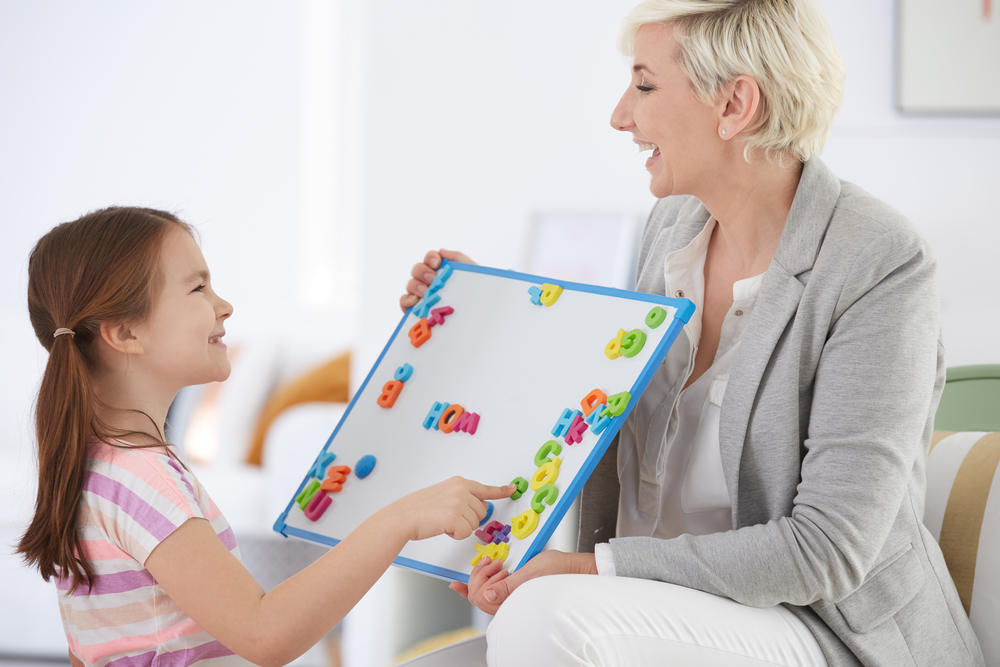Is your child showing an interest in learning the alphabet? Are you unsure of the best approach to help them master letters? If so, you’ve come to the right place.
We have plenty of tips up our sleeves to help you teach your child the letters of the alphabet and, more importantly, have fun doing it!
Keep reading to learn why gaining an understanding of the alphabet is important in early development; plus, discover our favorite ways to practice this new skill.
The Importance Of Learning The Alphabet

Seeing letters in their written form can be confusing for young learners. Plus, aside from learning the letter names, you also want your child to connect the sound of each letter to its written form, as this is crucial for learning the alphabet in its entirety.
Knowing the sounds associated with each letter in the alphabet helps children build a solid foundation for a variety of tasks — from reading activities to writing activities —and helps develop confident learners.
Children are often eager to learn the alphabet — after all, it’s a developmental rite of passage. For some children, this will come naturally. But, for others, it might not be as straightforward.
Children who are developing their working memory, or those who have weaknesses in their working memory, can find tasks such as learning the alphabet frustrating. While this might be disheartening to see, don’t worry! There are ways to overcome it.
Start working on the alphabet with your child early, around age two or three. If they seem uncomfortable rather than interested or they back off, it’s best not to rush them.
If this is the case, try sticking to simple activities — such as singing alphabet songs, reading alphabet books, and having magnetic letters available to play with — and hold off on more complex activities until they’re ready.
The key to making learning the alphabet a fun activity is to keep things playful and engaging! With that in mind, take a look below at our six favorite ways to help your child learn the alphabet.
6 Ways To Encourage Learning The Alphabet
1) Read Alphabet Books

Reading alphabet books with your child is a great way to expose them to the uppercase and lowercase versions of each letter of the alphabet. The more opportunities your young learner has to identify letters, the better!
Look for alphabet books that have bright, colorful pictures with the letters printed in a large, bold font to make it as simple as possible for your child to memorize.
Having each letter singled out and associated with a particular picture (for example, a picture of an apple for the letter “A”) helps children focus on one letter at a time.
Try reading alphabet books together at bedtime while you snuggle to help your child associate reading and learning with positive feelings. By starting your child’s reading journey in a positive way, you’re setting them up for success.
2) Learn The Letters Of Important Names
Since your child has known their name for some time now, it makes sense that one of the first written words they should learn is their name.
You can start by teaching your child the individual letters in their name. As they become more familiar with the written version of their name and they’re able to match the sounds to the letters, try adding the names of loved ones into the mix.
Family members like Mom, Dad, Grandma, Grandpa, siblings, and pets are a great place to start!
3) Choose A Letter Of The Day

As we mentioned earlier, the thought of memorizing 52 letters that each have an uppercase and lowercase version can feel very overwhelming — not only for your child but also for you.
It can be helpful to pick a “letter of the day” to focus your learner’s attention on. Try focusing first on letters with names similar to their sounds.
For example, the letter “B” and its sound are connected, whereas a letter like “H” is more difficult to grasp because it’s not pronounced the same or similarly to its name.
Once you’ve chosen your letter, see how many times you can spot it as you go about your day. Draw your child’s attention to street signs, words on food packaging, and phrases that come up in their favorite books or television shows.
Anytime you can incorporate learning the alphabet in a fun way and make a game of it, take advantage of the opportunity.
4) Play With Magnetic Letters
Magnetic letters are a great tool to incorporate into your daily routine when helping your child learn the alphabet.
Simply having a set of magnetic letters on your refrigerator is a good start, as your child will see them regularly. Plus, you can easily have your child practice reciting some of the letters throughout the day whenever you’re in the kitchen making a meal or snack.
For example, if you’re cutting up an apple for your child, you might ask them, “Apple starts with the letter ‘A.’ Can you find an ‘A’ on the refrigerator?”
Another engaging way to incorporate magnetic letters into learning is by hiding them in places your child might not expect and discussing the letter sound when they find it.
Try sneaking a letter into the cutlery drawer, onto their seat at the dinner table, next to their toothbrush — anywhere that they’re likely to come across it. When they notice it, make it a fun game by saying, “How did that sneaky letter ‘B’ get in there?”
Once your child is more familiar with particular letters, you might like to ask them what the letter is, rather than telling them. Try a phrase like, “Wow, that letter must be following you! Which letter is that?”
By repeating simple games like this, you can help your child recognize letters and remember their corresponding sounds.
5) Sing Alphabet Songs

In addition to the classic ABC song, there are many songs available on the HOMER Learn & Grow App as well as YouTube and Spotify that can help your child with learning the alphabet.
If your young learner has a favorite educational television show, try searching for songs featured on the show that incorporate learning letters and letter sounds.
If you can’t find the perfect one, make up your own! You and your child will have a great time using silly rhymes and funny sounds to write an alphabet song. And if they’re involved in the process, it’s going to be a project they’re proud of and can’t wait to show off.
You could even come up with a dance to accompany your new song! This is a great chance to get creative with your child and enjoy some fun movement together as well.
6) Incorporate Your Child’s Favorite Toys
What child doesn’t love playing with their toys? Whether it’s trucks or dolls, incorporating your child’s favorite toys into their learning journey is a clever way to help them understand the alphabet.
For this game, you can use your magnetic letters or create your own by writing each letter on a small piece of paper.
If your child has a collection of toy trucks that they love, stick a letter onto the tray of each truck. As your child plays, you can ask them to move the “B truck” or the “C truck” from one place to another. This is great for practicing letter recognition.
You could also incorporate letter sounds into this activity by asking your child to drive the truck with the letter that makes a “buh” or “kuh” sound (for the letters “B” and “C” respectively).
If your child has a set of dolls they play with often, there’s no doubt they each have special names. Try sticking the first letter of each doll’s name onto the toy to help your child recognize and memorize the letters and letter sounds associated with each one.
This is also a good time to introduce the idea of using initials to recognize what belongs to us, as you would with a backpack for school.
Have Fun Learning The Alphabet With HOMER!

Learning the alphabet doesn’t have to be overwhelming or boring! With our fun activities listed here, from using songs and dances to incorporating your child’s favorite toys, you can both enjoy this part of the learning process together.
Remember to keep it up by practicing these activities throughout the day — repetition is a fantastic learning tool to help your child master letters.
To build on your young learner’s alphabet skills, our Explore Letters Kit is the perfect addition to your daily activities. Watch your child’s confidence grow as they develop their literacy skills through play on ABC Island!
,


